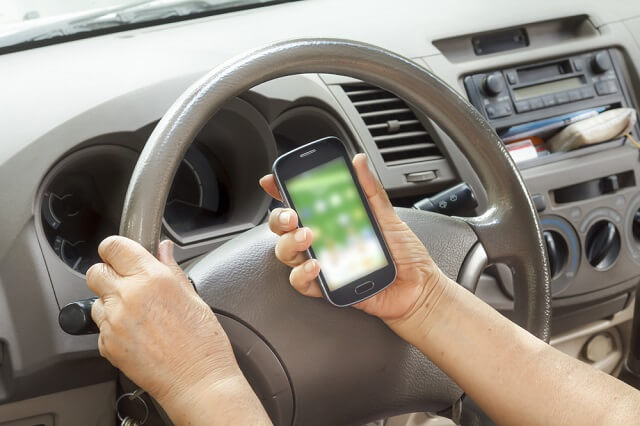Distracted driving is a serious problem across the country. It leads to thousands of fatalities and hundreds of thousands of injuries each year. Unfortunately, distracted driving collisions can occur at any point in time, even if the distraction present seemed small and insignificant.
Rear End Collisions
According to the National Highway Traffic Safety Administration (NHTSA), almost a third of all motor vehicle accidents are rear end collisions. To stop safely, a driver needs to be focused on what is going on and have adequate space between their vehicle and the vehicle in front of them. Keep a safe distance from the car in front leaves ample room to brake and/or avoid a rear-end collision.
If a person is distracted, it increases the potential for a rear-end collision significantly. If a driver is not keeping their eyes on the road, they will not have any reaction time should the car in front suddenly slow down or stop. Drivers who are following too closely are leaving no room for error and the likelihood of a collision increases dramatically.
Intersectional Collisions
If a driver is texting, eating, grooming or doing anything else behind the wheel – besides driving – the likelihood of them violating a stop sign or red light is much higher. Violations of traffic signals cause broadside collisions that are carry with them a severe force of impact. Of course, violent crashes that occur in intersections greatly increase the probability of a serious injury or wrongful death.
Recently, statistics show that drivers who regularly use a cell phone while driving are at significant risk of an intersectional collision because that have failed to yield the right-of-way. A cell phone can easily take a driver’s eyes off the road for 3-5 seconds. Driving blind for that amount of time is taking an extreme risk, especially approaching an intersection.
Lane Departure and Rural Road Collisions
Distracted drivers are frequently guilty of weaving out of their lane or going completely off the roadway. On two lane highways, the dangers of distracted driving become more pronounced as a head-on collision are deadly.
With the proliferation of the cell phone, lane departure and rural road collisions are becoming more prevalent. If someone is texting, adjusting the radio or reaching for something that fell on the floorboard, it is quite easy to drift into another lane or into oncoming traffic. Even if the distracted driver returns their eyes to the roadway, it may be too late to avoid an accident or cause them to weave in and out of their lane.
One Car Collisions
In addition to moving into the nearby lane or weaving in and out of the lane, drivers may also drift onto the shoulder. This can lead to a driver colliding with an electric pole, roadway signage or even flipping the vehicle.
In each of the examples of distracted driving collisions above, they could have been avoided had the driver been paying attention to driving, rather than another activity. Even though some people believe they can multitask while behind the wheel, this is not always the case. When driving becomes the secondary activity, they are putting themselves, as well as everyone else on the road at risk.






